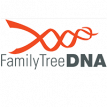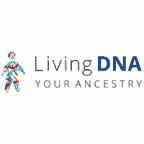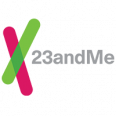
The Best DNA and Ancestry Products Compared
How DNA Testing Has Helped Family Tree Accuracy
DNA testing can help you find every person worthy of inclusion on your family tree and make sure that all that information is accurate.
Advertising Disclosure
Many or all of the companies featured provide compensation to us. These commissions are how we maintain our free service for consumers. Compensation, along with hours of in-depth research, determines where & how companies appear on our site.

DNA Testing and Family Trees
Nearly every school in the country gives students a family tree assignment. The idea is that they can go home and get help from their parents creating a family tree with branches that show their parents, grandparents, siblings and other relations. As an adult, you may want to go back deeper into your family’s past and create a tree that includes past generations. This can help you see if you’re related to famous faces such as celebrities and former Presidents. No matter how much you trust your parents, you can use a DNA test to make sure that your tree is as accurate as possible and that it includes the birth, death and marriage dates of every person.
Thanks to AncestryDNA, 23andMe and other popular tests, you can have your DNA tested and create a family tree in the same place. These sites let you create a tree that puts you at the bottom and includes branches for adding other relatives. Some of these sites offer hints based on what other users shared and let you add pictures to your tree too. With any of the top DNA tests, you can provide a sample from the comfort of your home and get accurate information about your family.
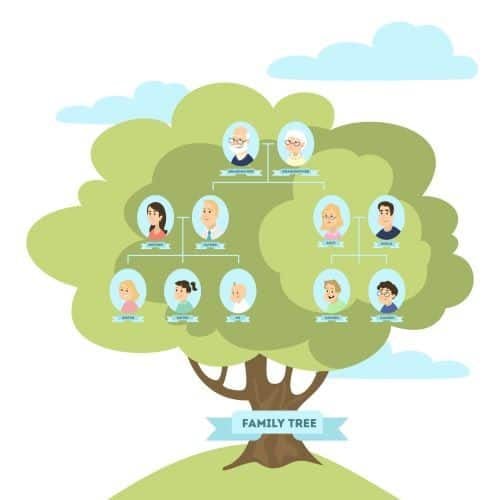
You can create a family tree and trace your ancestors through DNA testing.
Why are There Blank Spots on Your Family Tree?
Have you ever gone through a stack of old black and white photos and realized that you didn’t know who those people were? One of the sad facts of life is that people age. There may come a time when your grandparents can no longer remember who those people are or when they start forgetting who you and their other loved ones are. Unless you have a family Bible sitting around or someone wrote down a detailed history of your family, you probably lack the information needed to create a family tree. Simply not having access to family history can lead to blank spots on your tree.
Another issue you might face is that your family doesn’t want to talk about the past. You might take a DNA test and find that an aunt or grandparent had a child out of wedlock and gave that child up for adoption. Some people even take these tests and find that they have siblings they never knew about. Your family tree might have blank spots because you didn’t know that your great-grandparents had children who died in one of the wars or during childbirth. DNA tests can give you all the info that you need for a family tree.
With DNA testing, you can eliminate the blank spots on your family tree.
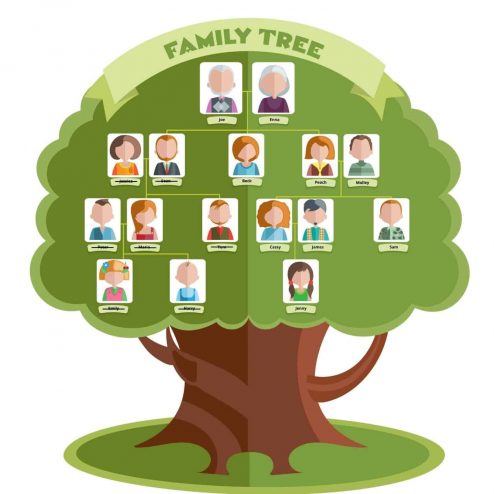
Reasons to Take More Than One DNA Test
With prices ranging from $79 to $99 or more, you might think that you need to pick the best DNA test and take just the one. Taking more than one DNA test can be helpful in some situations. The DNA that your grandparents, siblings and parents have is different from the DNA that you have. When each person in your family has a DNA test done, you can compare your results and learn even more about your family. This is because your grandmother and grandfather share more DNA with their parents than you do. Their tests can improve the accuracy of yours too. Some of the other reasons you might take more than one DNA test include:
- Some tests look at more regions than others do
- You can connect with family members who use the other sites
- Multiple tests let you link the family trees that members create to your own
- You can see how your ancestry estimates compare to those of your family
- Spouses can take DNA tests to find more information they can share with their kids
- You can have your kids tested and get them interested in working on your family tree and tracing their roots
What Family Members Should Get DNA Tests Done?

- Spouse
- Parents
- Grandparents
- Cousins
- Siblings
- Aunts and uncles
How Accurate are DNA Tests?
The big question that is likely on your mind is: how accurate are DNA tests? The truth is that the accuracy of these tests can vary across companies. To look at the accuracy of the tests, you need to get an idea of how the process works. DNA tests essentially use the samples in their databases to give you information about your family. That is why those who are African American and people without European ancestry often get mixed results. Think about it like this: if you spent your whole life surrounded by people who were white, you might think that people of other colors did not exist.
DNA testing companies are only as accurate as their databases can be. The more that people sign up and submit samples, the more accurate that those tests will become. This is one of the benefits of using AncestryDNA and the main reason why it’s the best test to use. The company constantly updates its database with new samples and will give you more information in the future. It might show that you’re 9.8% Irish when you first take the test and later drop this percentage to 8.2 and increase your percentage of Scottish genes because you match new users. All DNA tests base the percentage of your heritage on how your sample compares to others.
The accuracy of your DNA test can change as more people sign up and use the same test.
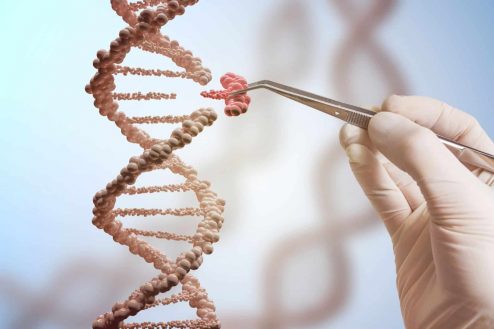
DNA Tests Can Show Familial Relations
The Netflix series “Grace and Frankie” featured an episode where an adopted character, Bud, used a DNA test and found one of his biological cousins. Though it might sound like a work of fiction, these tests can help you find third and fourth cousins as well as those who are more distantly related to you. Let’s say that you have parents who lost their parents at a young age. They likely didn’t talk to their great aunts and uncles much and may not have had siblings. Your family tree can look quite bare because it includes just you, your siblings and your parents.
When you take a DNA test and examine your results, you can see which people who used that test share genes and genetic markers. The more your genes are related, the closer connection you have to the person. With the user matching services that these tests offer, you can view other users in a list that places your closest relations at the top and the most distant relations at the bottom. This allows you to see all the cousins you have and find out how their parents and other family members relate to you. Those names can add quite a bit to your family tree.
DNA Testing Can Trace Migration Patterns
The chances are good that your family has some stories that correlate to some of the places your family lived. This can include funny stories about your great-grandparents immigrating to the United States through Ellis Island and stories your grandparents told about growing up in the Midwest. You may even hear about how one of your distant ancestors helped save the life of a famous person in Europe or how they lived in Kentucky with Native American tribes. DNA testing can help you see how accurate those stories are and trace the migration patterns of your family.
Very few people were born in one place and spent the rest of their lives there. If more people did, we wouldn’t need DNA testing. We could simply say that you had the same DNA as that group because you were born there too. DNA tests can use your sample and the samples that others provided to see what genetics you share and how those genes changed at different points in history. This can show you proof that your ancestors live in parts of Southern France and then moved to England and settled in Ireland before they came to the United States. Some migration maps show even more detailed information and let you view the routes that similar groups took.
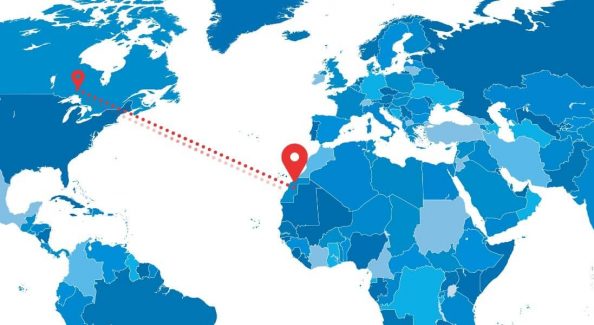
Migration mapping and tools help you trace your family across countries and continents.
Tracing Your Mother's and Father's Ancestors
The best DNA tests give you the chance to learn about your mother’s line as well as your father’s line. You are a combination of genes that come from both sides and have traits that connect you to both parents. Even if you lost one of your parents at a young age or didn’t grow up with them both, you likely have traits that remind you of them. Genetic ancestry testing can offer mitochondrial or Y-chromosome testing. The male line in a family relates to the Y-chromosome, which each father will pass to his sons. Y-chromosome testing is helpful if you want to know if you’re related to people who share your surname. It can identify any specific genes found in people from two different families and determine if they were related at some point in the past.
Mitochondrial DNA comes from your mother and is found in both men and women. All testing companies can test your sample for the mitochondrial DNA that you have and show you where your mother and her mother and all the other women in your family came from as well as tell you where they moved throughout time. Either type of testing can tell you more about either side of your family.
You can use this chart to see the chromosomes that you get from both your parents.
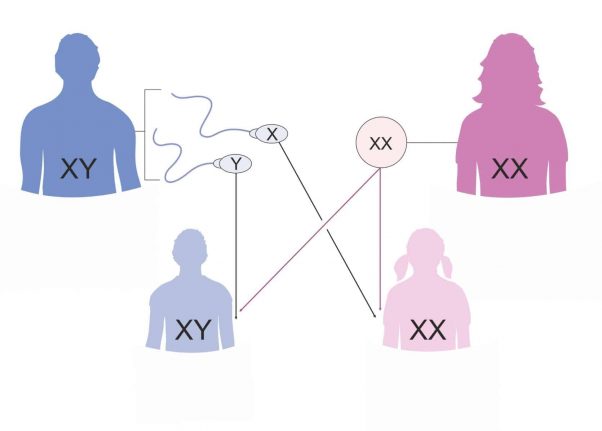
DNA Tests Let You Hear Family Stories
Do you live in the same city or state as most of your loved ones and get together regularly? Not everyone is so lucky. Many people live a far distance away from their families and only see them a few times a year or less. When you can check in on Facebook and keep in touch with apps such as Skype, you will probably miss out on some of the stories they tell and the events that happen. That is when DNA testing comes in handy. Let’s say that your parents got married and moved to the opposite side of the country for work while their siblings stayed in their hometown. With DNA testing, you can get in touch with the aunts and uncles you seldom see and hear stories about your parents from their younger days.
DNA testing also gives you the chance to chat with family members and hear stories that your parents might know. A second or third cousin might know about the time your grandfather served in World War II or how your great-grandmother immigrated from a foreign country at a young age without her family. No matter how distantly you’re related to the matches you have, you can learn more about your family through them.

Thanks to the match feature that most DNA tests provide, you can learn more about your family through distant relatives.
How to Check the Accuracy of Your Genealogical Research
Between DNA testing and online records, you can get started on your family tree whenever you want. One thing you should consider though is how accurate the information you find is, especially if you rely on the web. The best way to tell if a piece of information is accurate if you can verify it across two or more resources. Couples sometimes lie about their wedding dates because they don’t want their children to know that they have a child before or soon after marrying. This is especially common among the older generation. If you can see a marriage date listed in both the public records of the local courthouse and in an online database, you can verify that the data is accurate.
Another way you can verify accuracy is when you compare your information to that found by another person. If your uncle claims that your grandfather was born in 1886 and you found a birth date in 1892 listed, one of you is wrong. You’ll need to go back to your resources and try to find out which date is correct. Experts recommend that you use all public records and resources that are available to you and that you give priority to government records such as census reports.
Types of Genealogical Records You Can Find Online

- Military records
- Census reports
- Marriage records
- Birth certificates
- Death certificates
- Newspaper archives
Should You Use Different Tests Based on Your Ethnicity?
While there are some great DNA tests out there like AncestryDNA and MyHeritage, some are better than others for those of a specific ethnicity. The problem is that most tests have a large number of users who descended from European countries, which means that the majority of samples come from white people. If your family came from Africa generations ago and primarily married other immigrants, one of the best DNA tests for African Americans is a better option for you. By the same token, those who want to prove that they descended from a Native American tribe should consider the best DNA tests for Native Americans.
The databases that each test has contains users they can verify are Native American or African American. They’ll compare your genetic markers to see how much you have in common with those members. You can see if your family belonged to one or more Native American tribes or where they lived in Africa before coming to the United States. Some tests work well for Asians too and include information on regions such as Mongolia and Thailand in addition to China and Japan. Some cultural groups find certain tests better than others.
Which Tests are Best for Ethnic Groups?
How to Create a Family Tree
There are a variety of programs that let you create a family tree and customize it to fit your family. With AncestryDNA and other popular tests, you can use the free resources that are available to design your tree too. It’s usually best to start with your name first and list your date of birth. You can add two lines on top that correspond to your mother and father. If they’re still married, you can add a line and list their marriage date in the middle. The information that you add to the tree beyond this point depends on what you want to add. Some of the information we recommend adding include the birth dates, names and death dates of other family members such as:
- Children
- Grandparents
- Siblings
- Aunts
- Uncles
- Cousins
For extensive family trees that go back multiple generations, you may find it helpful to use family tree pages. You can print these pages off the web and find them in genealogical research books. They have lines where you can add the name, date of birth and death date for each person and information about who the individual married and any kids that he or she had. Those pages let you retain info about the ancestors who died before you were born.
You can opt for different types of family trees, including one with just enough space for your close family.
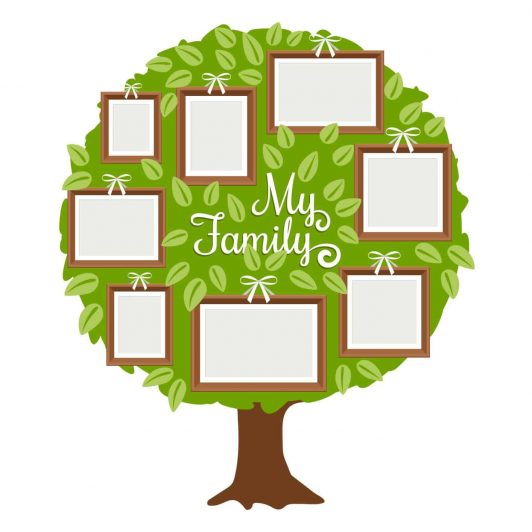
Best Family Tree Apps
The Jesus Christ Church of the Latter-Day Saints has one of the largest collections of genealogical research and resources in the world. When you visit one of these libraries, you might not want to make copies of everything you find or write down dozens of dates and names. Some of the top family tree apps can help you save money and time because they let you keep track of everything you want to remember from those records. Other apps let you research with your phone or tablet too. Some of those apps include:
- Ancestry: With a paid membership to Ancestry, you can download a handy app that lets you check records from any mobile device and show those records to loved ones. You can also access the results of your AncestryDNA test through the app.
- Find A Grave: Find A Grave is a popular website where people can post and share photos that they took of graves at different cemeteries. It also includes written information about the graves, including the name and date of death of the person buried there. You can access all those photos and records with the site’s app to track family members who passed away.
- PhotoScan: One of the easiest ways to make copies of records and photos is with PhotoScan from Google. It takes only seconds to scan a photo and make a copy on your mobile device that you can send to others. This app works well on certificates and documents too.
Other Apps That You Can Use for Genealogical Research
- FamilySearch
- Who Do You Think You Are? Forum
- Findmypast
- Treeview
- MyHeritage
- RootsMagic
- One Note
What DNA Tests are Best for Family Tree Building?
If you made it this far into the article, you’re probably wondering which of the top DNA tests can help you build your family tree and find all the info that you want. Most of the popular tests work well for this reason, including AncestryDNA. The company recently started advertising some of the fun features of the test, including the traits that it shows about you. Through Lines is a feature on the site that helps you connect with any potential matches. You can click on a name in your family tree to see what other trees have that same person listed. AncestryDNA also lets you view how many chromosomes you share with others based on your DNA test.
Another option is MyHeritage, which has an impressive database with millions of users and testing that matches you with dozens of people. The site claims that it can provide users with up to 10 times the matches that similar companies do. MyHeritage also has a built-in family tree feature that shows the photos shared by other users when you add them to the tree. You can add photos of family members who didn’t take the test too.
Tips for Building Your Online Family Tree
Start with immediate family members
While you might want to go as far back in history as you can, you should start with your immediate family members. This lets you use the resources that you find to extend each branch back as you add more names and dates.
Ask for help
If you’re lucky and still have grandparents and great-uncles and aunts around, you should talk to them as soon as possible because they won’t be around forever. Ask them about where they came from and what they can remember about their parents and grandparents. They may even have information about where family members are buried and where you can find records.
Search newspaper archives
Newspaper archives can provide a wealth of information. Even newspapers that shut down often have online archives that you can search through. When you do a simple search of your surname, you can view all the articles that relate to your family.
Check forums and message boards
Ancestry offers a forum where you can post questions and respond to others as a paid member, but you’ll find free message boards that you can use too. If you reach a point in your research where you don’t know where to go next or you find contradictory information, you can post for help.
Focus on one branch or name at a time
Trying to research your whole family can be overwhelming, which is why we recommend focusing on a single person or a branch. Find out as much information about that person as you can and add it to the branch before you move to the next name. You can also pause your work when you reach a dead spot and come back later.
Post on social media
Facebook, Twitter and other social media sites can provide more information than you ever expected to find. When you decide to create your family tree, make a post that asks for help. You might be surprised at how many people come out of the woodwork to help.
Best Websites for Genealogical Research
Photo by MyTrees, Photo by FamilySearch, Photo by Ancestry , Photo by USGenWebProject
Create an Accurate Family Tree with DNA Testing
DNA testing has helped make family trees more accurate in many different ways. These tests reduce some of the mistakes that you can make when researching family members online. It’s common to come across two people with the same name and similar birth dates, which can make it hard for you to see which one belongs to your family tree. You might have issues finding out where your grandparents once lived or where their ancestors came from too. With DNA tests, you can get detailed and accurate results based on your sample that give you some proof of your heritage.
The testing companies frequently update their databases too and change the results of users as new information becomes available. Though you don’t need to log in every month to view your results, you should check a few times a year to see how your results changed. With some of the tips that we provided and DNA testing, you can create the ultimate family tree.

